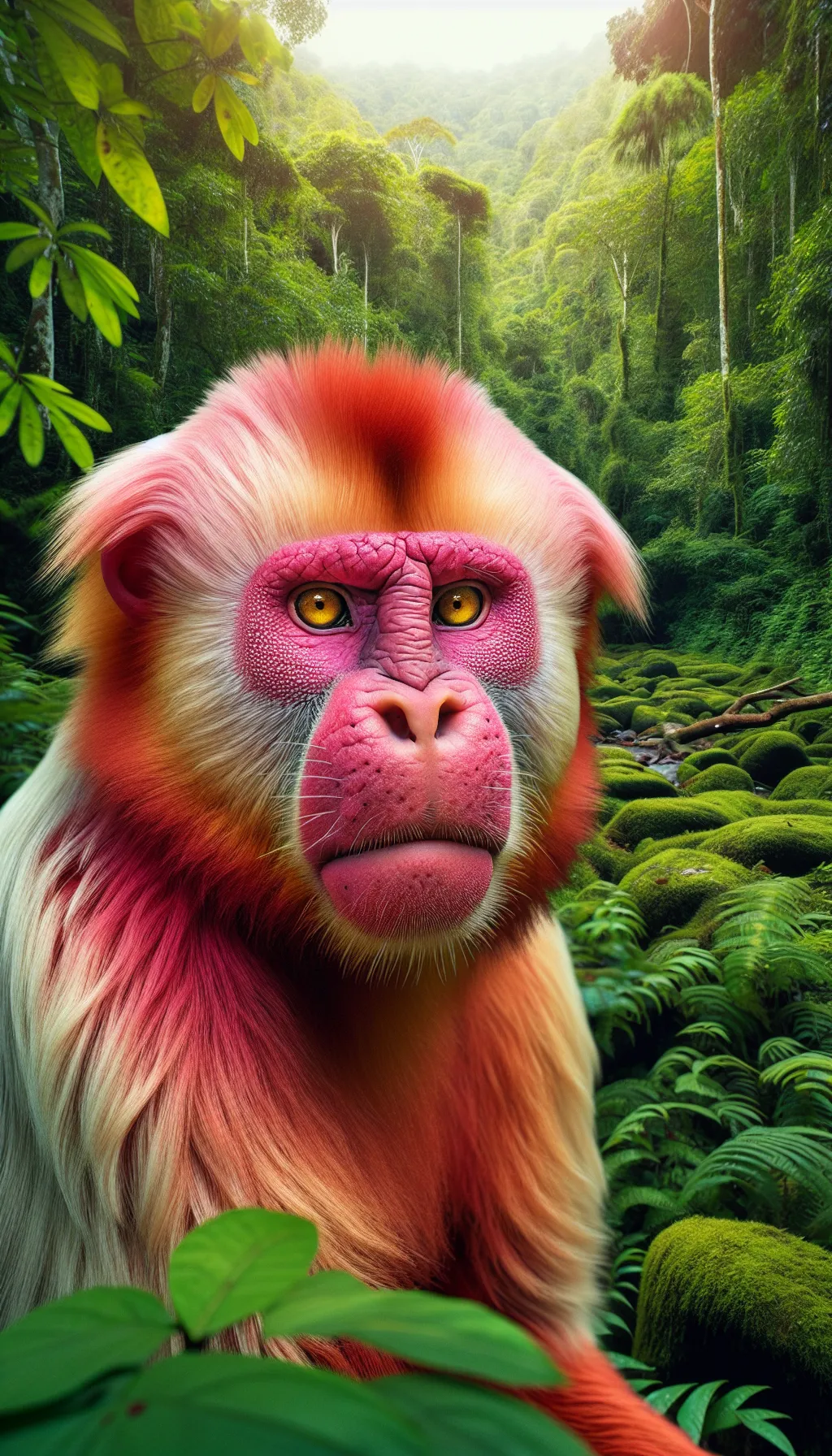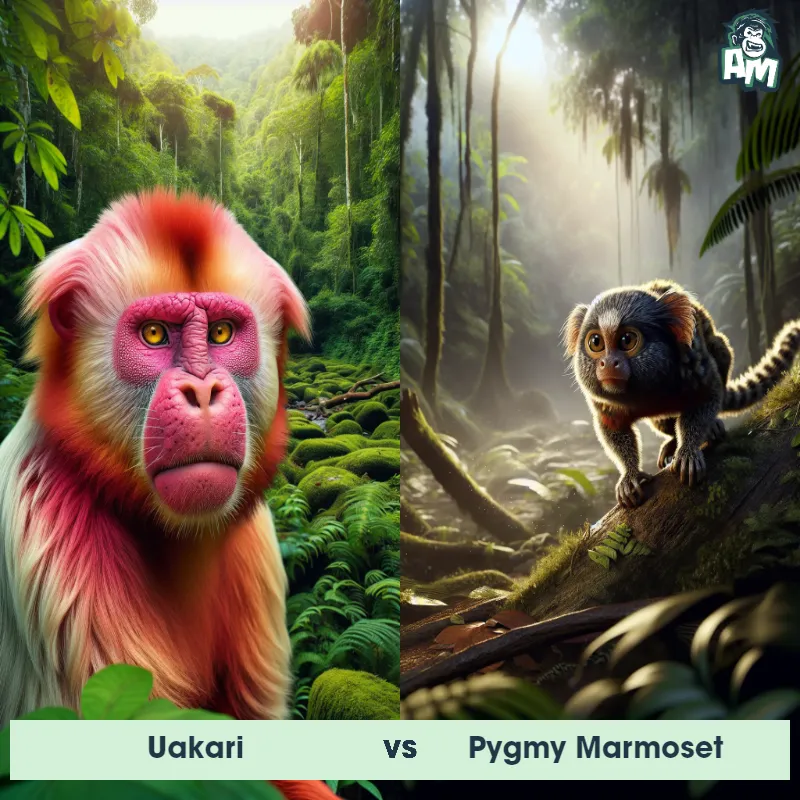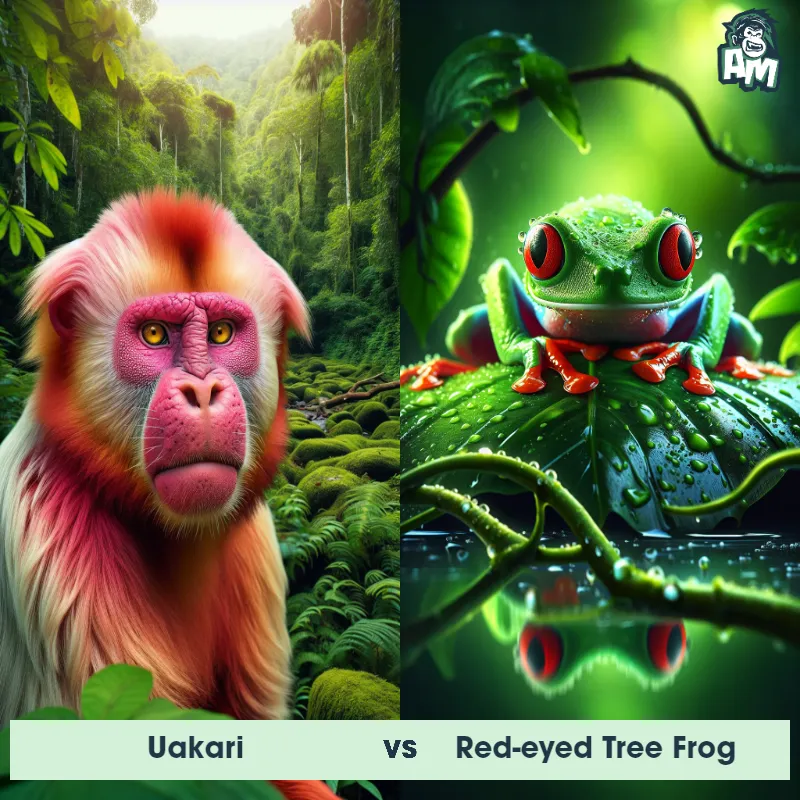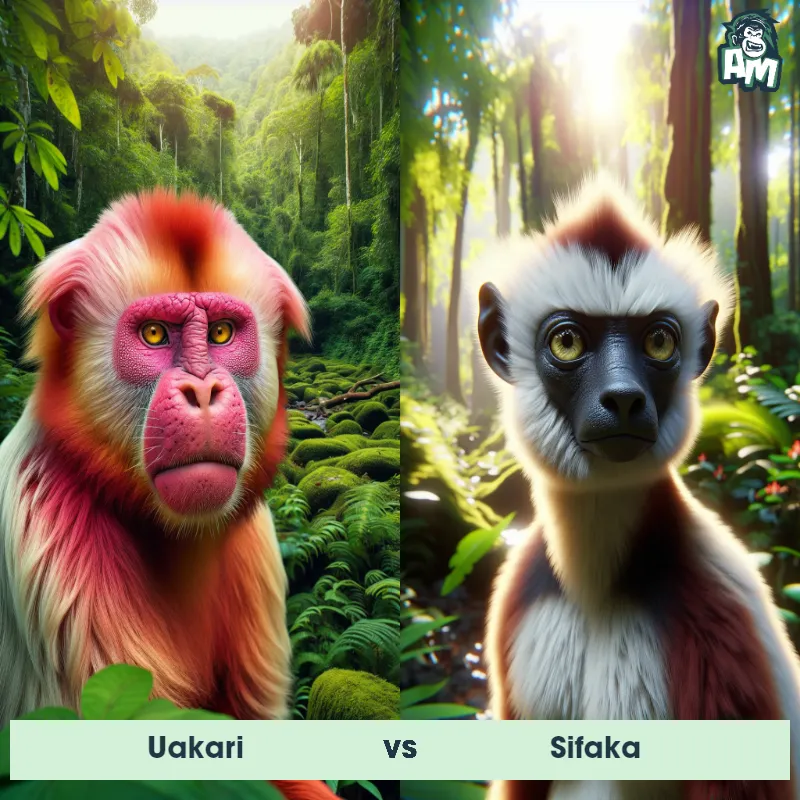The Uakari
The Uakari, also known as the Red Uakari or Bald Uakari, is a small primate found in the Amazon rainforest of South America. It is characterized by its striking red or orange fur and a lack of hair on its face, giving it a bald appearance. The Uakari has a compact body with a short tail and relatively long limbs. They are highly social animals and live in large groups called troops, consisting of up to 100 individuals. They primarily feed on fruits but also consume leaves, flowers, and insects. The Uakari is well-adapted for life in the rainforest with strong limbs for climbing and a tail that helps with balance.

| Uakari | |
|---|---|
| Size | Height: 43-46 cm (17-18 inches), Length: 38-48 cm (15-19 inches) |
| Weight | 2.3-3.6 kg (5-8 lbs) |
| Speed | 6 mph (9.65 km/h) |
| Key Strength | Agility |
| Biggest Weakness | Lack of physical aggression |
| Scientific Name | Cacajao calvus |
| Family | Pitheciidae |
| Habitat | Rainforest |
| Geography | Amazon Basin |
| Diet | Fruits, seeds |
| Lifespan | 15 years - 22 years |

The Uakari
The Uakari, also known as the Red Uakari or Bald Uakari, is a small primate found in the Amazon rainforest of South America. It is characterized by its striking red or orange fur and a lack of hair on its face, giving it a bald appearance. The Uakari has a compact body with a short tail and relatively long limbs. They are highly social animals and live in large groups called troops, consisting of up to 100 individuals. They primarily feed on fruits but also consume leaves, flowers, and insects. The Uakari is well-adapted for life in the rainforest with strong limbs for climbing and a tail that helps with balance.
![[object Object] Gif](https://tenor.com/view/bigsmile-monkey-smiling-gif-22687322.gif)
Fun Fact: Uakari monkeys have an incredibly powerful jaw that allows them to crack open nuts and seeds, reaching pressures equivalent to that of a human bite but with much smaller teeth.
| Uakari | |
|---|---|
| Size | Height: 43-46 cm (17-18 inches), Length: 38-48 cm (15-19 inches) |
| Weight | 2.3-3.6 kg (5-8 lbs) |
| Speed | 6 mph (9.65 km/h) |
| Key Strength | Agility |
| Biggest Weakness | Lack of physical aggression |
| Scientific Name | Cacajao calvus |
| Family | Pitheciidae |
| Habitat | Rainforest |
| Geography | Amazon Basin |
| Diet | Fruits, seeds |
| Lifespan | 15 years - 22 years |
Uakari Matchups
We use AI to simulate matchups between the Uakari and other animals. Our simulation considers size, strength, and natural predatory behaviors to determine the most likely outcome.

Can't find the Matchup you want?
Create Your Own MatchupUakari: Diet, Predators, Aggression, and Defensive Behaviors
What do Uakaris eat?
Uakaris primarily feed on fruit, seeds, insects, and small animals like insects, reptiles, and birds. They have been observed foraging in the trees for fruits and nuts, using their specialized teeth to crack open tough shells.
Do Uakaris have any predators?
Yes, Uakaris have predators such as large birds of prey, jaguars, and large snakes. These predators target uakaris when they are vulnerable on the ground or in low branches of trees.
Are Uakaris aggressive?
Uakaris are not generally aggressive towards other animals or humans. They are social creatures that live in groups and establish a hierarchy within their group through displays of dominance rather than aggression.
Do Uakaris fight?
Uakaris may engage in fights within their social groups for dominance or to establish hierarchy. These fights usually involve displays of aggression, vocalizations, and physical confrontations such as biting and chasing.
How do Uakaris defend themselves?
Uakaris defend themselves by vocalizing warnings, displaying aggressive behavior, and fleeing from potential threats. They may also use their strong jaws and sharp teeth to defend themselves against predators or intruders.
What is Uakaris' biggest weakness in a fight?
Uakaris' biggest weakness in a fight is their vulnerability to larger predators due to their small size and lack of physical defenses. They rely on their agility and ability to flee quickly to avoid confrontations with larger, more powerful animals.
Fun Fact: The bright red or orange coloration of Uakari monkeys' fur is a result of their diet, which consists mainly of fruit. The pigments from the fruit's red or orange-colored pigments, called carotenoids, are absorbed and retained by the Uakaris, giving them their unique appearance.
Fun Fact: Uakari monkeys are known for their loud vocalizations, which include a range of barks, screams, and chirps. These vocalizations serve as a form of communication between group members and help in maintaining social bonds within the troop.













